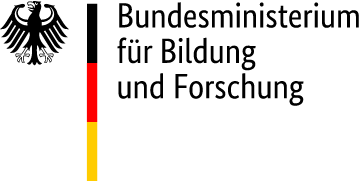Looking at France’s socio-cultural history from a literary angle, Nina Mueggler views the reign of François Ier as a crucial phase in the constitution of French national identity. In order to document this phase, Mueggler’s erudite study brings together and contextualises clusters of primary sources (poems) from the 1530s and 40s. »Bon pays de France« rests on the hypothesis that various poetic joutes, some recreational, others more adversarial, lay at the heart of key socio-cultural developments in François Ier’s later reign, out of which would emerge identifiable forms of national identity. Mueggler’s study interrogates how various actors in literary production (authors and printer-booksellers) negotiated different aspects of what Mueggler calls »l’enjeu national«: five interlocking domains of the inchoate French nation, namely, the French sovereign, the French vernacular, religion, geography, and social hierarchy. Mueggler handles her heuristic tools carefully, historicizing the notion of »l’enjeu national« with a nod to Timothy Hampton’s classic 1990 study, »Writing from History: The Rhetoric of Exemplarity in French Renaissance Literature«. In a similar vein to Hampton, Mueggler gives pride of place to literary texts, regarding them as the primary vehicles for creating and contesting notions of origin and generation. »L’enjeu national« is thus a »necessary anachronism« (p. 28), but nonetheless a productive one, for tracing what was a fluid and complex process of cultural production.
The study is divided into four main parts, each covering a major joute. Part I revolves around the »Fleurs de poesie françoyse« (1534), one of the first collections of poetry to exhibit its Frenchness in a nationalistic sense in its title. This collection originated in the royal entourage, but as a printed work it targeted an urban audience. Drawing heavily on the Gallic heritage of the previous era – Lemaire de Belges, André de la Vigne, Villon, Cretin, and Jean Marot are all represented – the »Fleurs de poesie françoyse« is seen as signaling a transition to an era in which France can begin to compete with Italy for cultural hegemony. Mueggler reveals the instrumental role played by the printer Galiot du Pré, not only in launching the »Fleurs de poesie françoyse«, but also, more generally, in shifting French typographical conventions towards roman typeface.
Part II is devoted to the flourishing of blasons anatomiques. The blason genre is well known to Renaissance scholars, and is indeed somewhat notorious for its gratuitous and often misogynistic representation of female body parts. Mueggler does not revisit feminist engagement with the genre but instead calls attention to the geographical distribution of the blasonneurs across France, in Picardie, Le Mans, Toulouse, Lyon, and Paris. Through granular readings of blasons marotiques (those of Clément Marot and his host of imitators), Mueggler traces connections and connivences between the disparate blasonneurs, who styled themselves in various heraldic postures in search of a »forme de noblesse poétique« (p. 200) as they opened up new viewpoints on the female body. Mueggler seeks critical leverage over the contreblasons that soon rebuked the patent eroticism of the blasonneurs and sought instead an allegorical perspective on the female anatomy: spiritual conceits, it transpires, were often a smokescreen for the poets’ ambitions, and suggestive of a pragmatic strategy for securing a royal charge. As per Part I, we discover how printers – especially Gilles Corrozet – capitalised on the commercial opportunities of an in-vogue genre.
At the heart of »Bon pays de France«, in Part III, lies an extended analysis of the famously acrimonious quarrel between Clément Marot and François Sagon that issued on the back of blason poetry in the late 1530s. Mueggler is not content merely to rehearse the familiar specifics of the quarrel; instead, she goes after the broader, nationalistic resonances, showing how both sides championed, in their different ways, themselves as the preeminent poet of France and of the medium of the French vernacular. Strikingly, Mueggler downplays the comic aspects of the Marot-Sagon exchanges (perhaps a little too much), reading locutions such as cum commento as serious attempts to endow these exchanges with the trappings of erudite philology. More convincing, however, is Mueggler’s insistence on the importance of the regional: Marot and Sagon both appealed to their regional heritage (Normandy and Le Mans for Sagon, Cahors and Paris for Marot) as they sought to establish a distinction between good and bad uses of the French vernacular. At the end of Part III, Mueggler considers the semi-official functions of the Conards de Rouen, the powerful Normand confraternity that intervened to reprimand and humiliate Sagon: here, a little more probing at why the Conards sided with Marot – rather than with their fellow Normand poet – would have been helpful.
Part IV considers another well-known quarrel: the quarrel of the Amies that came to prominence in the early 1540s, in which a number of female personae were contested by leading male poets. Here, as Mueggler acknowledges, the nationalistic resonances are not as pronounced as in the rest of her study; nonetheless, Mueggler carefully digs beneath the surface of these poems to uncover a number of (male) anxieties concerning women’s access to luxury gifts that pervade the quarrel of the Amies, and might conceivably be construed as being of national significance beyond the literary sphere. The literary analysis of this section is instructive, looking back to Alain Chartier’s celebrated fifteenth-century »Belle dame sans mercy«. In Paul Angier’s contributions, Mueggler also spies subtle regional connections to Normandy and the work of Sagon, thus suggesting that the quarrel of the Amies might be an indirect outworking of the Marot-Sagon hostilities.
In total, »Bon pays de France« is a refreshingly ambitious contribution to scholarship on the poetry of the reign of François Ier. Mueggler’s desire to »élargir les frontières« of what we know about poetic sociability in this period is consistently grounded in meticulous and geographically sensitive readings. That thoroughness allows the reader to see clearly in Mueggler’s apparently disparate corpus the archipelagic shape of the regional, through which the thematic unity of the national in her study emerges strongly. Across the study, moreover, we are reminded of the international political significance of French poets’ articulation of national unity, set against the fragmentation of Italy. In keeping with her methodological circumspection, Mueggler does not posit this unity as a given: it is instead a stark reminder of just how far the nation, at every level, is a fundamentally contextual phenomenon, ever subject to contestation and renegotiation.
Zitationsempfehlung/Pour citer cet article:
Jonathan Patterson, Rezension von/compte rendu de: Nina Mueggler, »Bon pays de France«. Enjeu national et joutes poétiques sous le règne de François Ier, Genève (Librairie Droz) 2023, 616 p. (Cahiers d’Humanisme et Renaissance, 190), ISBN 978-2-600-06416-3, DOI 10.47421/droz64163, EUR 38,90., in: Francia-Recensio 2024/1, Frühe Neuzeit – Revolution – Empire (1500–1815), DOI: https://doi.org/10.11588/frrec.2024.1.103669








